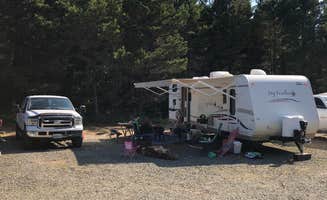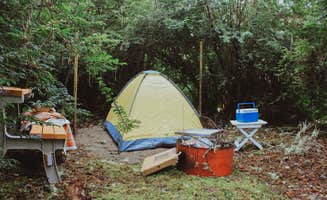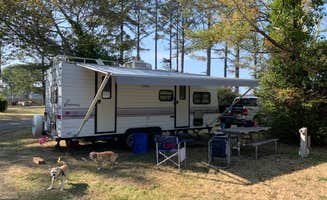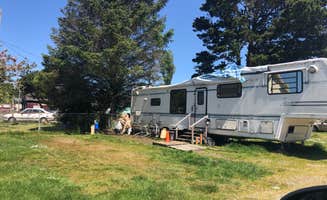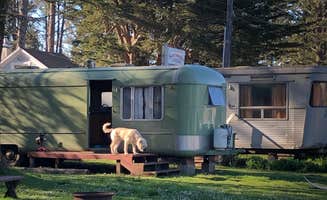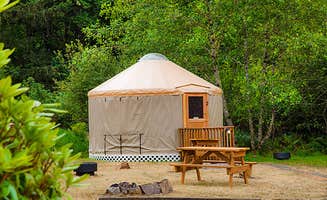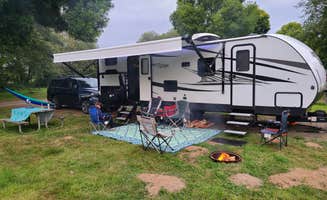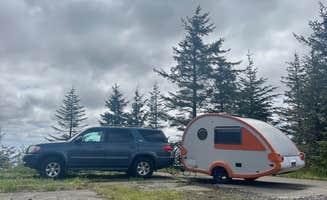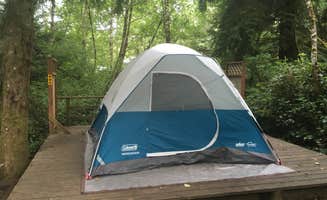Washington's Pacific coast offers diverse camping sites near Loomis, Washington. The coastal area maintains moderate temperatures averaging 48-60°F during summer months, with afternoon fog common even during warmer periods. Most established campgrounds in the region operate year-round with services reduced during winter months when precipitation increases significantly.
What to do
**Beach exploration: Venture along the shore at Cape Disappointment State Park, where campers can discover unique coastal features. "Walk to the beach to find treasures and sit to relax and just watch the waves. Very peaceful, and my teens loved it!" notes Kimberly T. The park includes multiple hiking trails through forest areas leading to beach access points.
**Historical sites: Visit military installations and interpretive centers at Fort Stevens State Park. "There is sooo much to do in this area! It's rich with history and we could have easily spent another week touring around. The Martime Museum is up the road," shares Jill T. Fort Stevens includes concrete military bunkers, gun batteries, and an interpretive center documenting coastal defense systems.
**Trail hiking: Access the Discover Trail from Long Beach RV campgrounds for biking and walking routes connecting beaches and state parks. "A 5 minute walk down the beach path leads to a great beach. The sites are tight, but the town was fun," reports Kate S. The trail extends approximately 8.5 miles with multiple access points near camping areas.
What campers like
**Beach proximity: Many campgrounds provide direct beach access via walking paths. At Pacific Holiday RV Resort, campers appreciate the short hike to shore. "It's .30 miles from a beautiful clean unspoiled beach by way of a path that's a beautiful walk. Suddenly you climb a small incline and there's the Pacific in all its glory," says Roxanna L.
**Wildlife viewing: Deer and coastal birds are commonly spotted throughout campgrounds in the region. "Trees surround most sites and deer wander through unattended sites," reports Greg B. about Ocean City State Park. Morning and evening hours typically offer the best wildlife viewing opportunities.
**Clean facilities: The Lamp Camp receives consistent praise for maintenance standards. "The facilities were incredibly clean with HOT water, and the location can't be beat. I highly recommend grabbing the sites closest to the ocean if you can so you hear the waves as you drift off," recommends Tiffany B. Most established campgrounds provide shower facilities with varying access hours.
What you should know
**Weather variability: Coastal fog can appear suddenly even during summer months. "We tent camp year-around! It's very beautiful no matter what time you go," notes Charlotte M. about camping at Cape Disappointment. Bringing layers regardless of season is recommended as temperature shifts occur quickly.
**Reservation requirements: Many coastal campgrounds fill completely during summer weekends. "We didn't have a reservation for the campground the afternoon we decided to stop in July. To reserve a yurt typically requires a minimum of two nights. We were fortunate to get a yurt for one night in July as a walk in," shares a visitor at Fort Stevens State Park.
**Cell service limitations: Signal strength varies significantly throughout coastal camping areas. "I got zero reception in the campground. I use Verizon," reports Christina F. Downloading offline maps before arrival is essential for navigation in more remote areas.
Tips for camping with families
**Kid-friendly amenities: Choose campgrounds with dedicated recreation spaces. "We have been there multiple times, it's one of my favorites. So much for kids to do from exploring, riding bikes, fishing and going to the amphitheater for some stories," writes Jenny M. about Fort Stevens State Park. Many established campgrounds offer evening ranger programs during summer months.
**Beach safety awareness: Monitor tide schedules when planning beach activities with children. "We took this trip to spend time with the grandparents. I did enjoy the close beach access. It's a pretty path right from the campground," mentions a visitor at Long Beach RV and Camping Resort. Incoming tides can advance quickly along flat shorelines.
**Bug preparation: Mosquitos can be prevalent in wooded coastal areas. "This is a great campground with a lot of sites. Visiting the Iredale shipwreck especially at sunset is beautiful. Also visiting the forts and cannons are fun. Bring mosquito repellent!" advises Gail S. Bug activity increases significantly during evening hours and after rainfall.
Tips from RVers
**Site selection strategy: For larger RVs, check site specifications carefully before booking. "The even numbered spots all have the sewer on the right side requiring a very long sewer hose extension that the hardware store nearby does have," explains a camper at Long Beach RV and Camping Resort. Many campgrounds feature different hookup configurations depending on site number.
**Off-season advantages: Consider visiting during shoulder seasons for more availability. "We stayed here a few weeks ago and had a great time! Friendly staff. Nice quiet place and easy access to the beach," notes Gary S. about Bay Center-Willapa Bay KOA. Most coastal campgrounds remain operational year-round with fewer visitors during fall and winter months.
**Leveling requirements: Prepare for uneven terrain at some coastal sites. "We got spot #30, which was an unlevel back-in site. We were told all sites are FHU, but I couldn't figure out how to get the sewer cap off," reports Laura M. Bringing leveling blocks is recommended for most coastal campgrounds.


